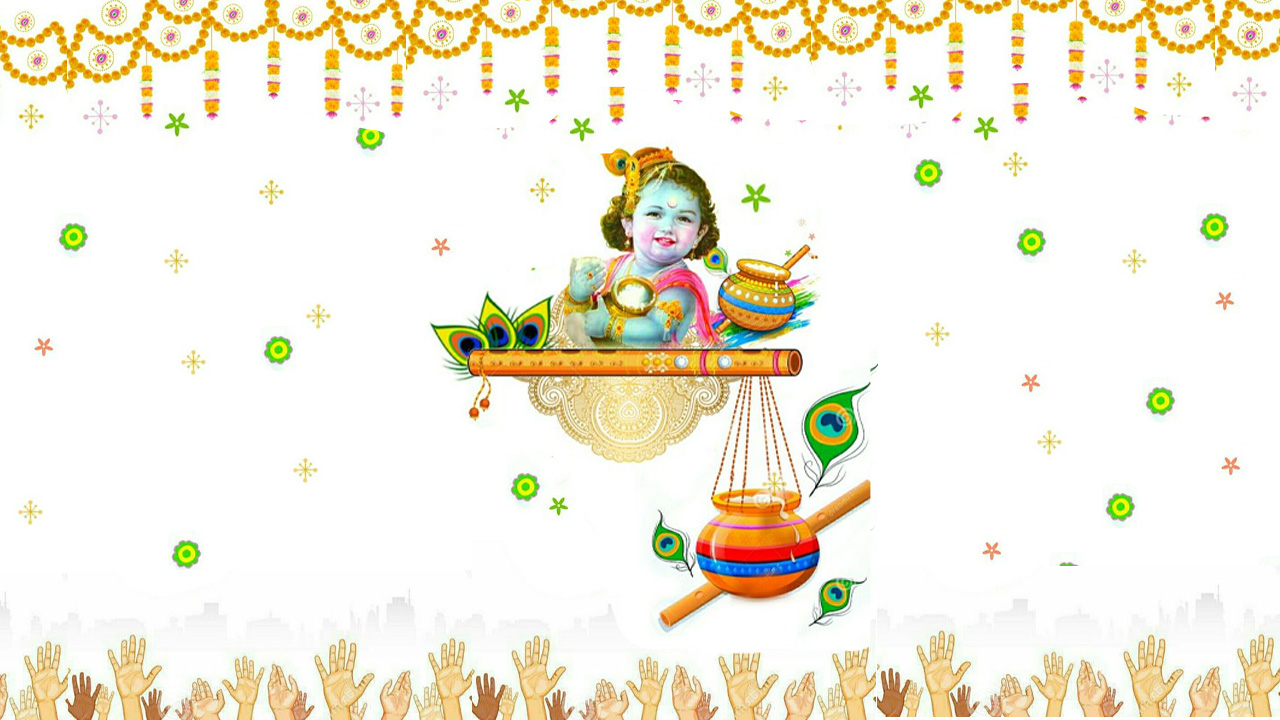Introduction
Janmashtami, also known as Krishna Janmashtami, is one of the most significant and widely celebrated festivals in India and among Hindus worldwide. It marks the birth of Lord Krishna, the eighth avatar of Lord Vishnu, who is revered as the epitome of divinity, love, and wisdom. This joyous occasion falls on the eighth day (Ashtami) of the Krishna Paksha (dark fortnight) in the Hindu month of Bhadrapada, typically occurring in August or September. Let's dive into the rich cultural and spiritual significance of Janmashtami and how it is celebrated.
The Legend of Lord Krishna's Birth
According to Hindu mythology, Lord Krishna was born in the small town of Mathura, in present-day Uttar Pradesh, to King Vasudeva and Queen Devaki. His divine birth occurred in a prison cell, as King Kansa, Devaki's brother, was a tyrant who imprisoned his sister and her husband due to a prophecy that her eighth son would be his undoing. Krishna's birth is believed to have happened at the stroke of midnight during a heavy rainstorm, making it an event of great significance.
Symbolism and Spiritual Significance
Janmashtami is not just a celebration of Lord Krishna's physical birth, but also a reminder of his divine message and teachings. Lord Krishna, through the Bhagavad Gita and his various life experiences, imparted valuable life lessons such as righteousness, duty (dharma), devotion, and the path to liberation. His mischievous childhood antics, melodious flute-playing, and divine wisdom continue to inspire and guide people on their spiritual journeys.
How Janmashtami Is Celebrated
1. **Fasting and Prayer:** Devotees observe fasts and engage in prayer and meditation on this day. Many visit temples dedicated to Lord Krishna and participate in special ceremonies and rituals.
2. **Midnight Celebrations:** The birth of Lord Krishna is believed to have occurred at midnight. Devotees stay awake and participate in midnight prayers, singing bhajans (devotional songs), and reading sacred texts.
3. **Swinging the Baby Krishna:** In temples and homes, a small idol or image of baby Krishna is placed in a cradle and gently swung, symbolizing his birth and the joyous occasion.
4. **Dahi Handi:** A popular tradition in Maharashtra involves forming human pyramids to reach and break a pot filled with butter, curd, and other goodies, reminiscent of Krishna's love for butter.
5. **Jhankis and Processions:** Elaborate tableaus (jhankis) depicting scenes from Lord Krishna's life are displayed in temples and public places. Processions with beautifully adorned idols of Krishna are taken through the streets.
6. **Feasting:** Special vegetarian dishes and sweets, such as makhan (butter), laddoos, and panjiri, are prepared and shared among friends and family.
7. **Cultural Performances:** Various cultural programs, dances, dramas, and skits based on Krishna's life are performed in schools and communities.
8. **Charity:** Acts of charity and helping the less fortunate are encouraged on this day, as Lord Krishna emphasized the importance of selfless service (seva).
Janmashtami Across India
While the essence of Janmashtami remains the same, different regions of India celebrate it with their unique cultural flair and traditions. In Mathura and Vrindavan, the birthplaces of Krishna, the celebrations are especially grand and attract pilgrims from all over the world. In the western state of Gujarat, the festival is marked by the energetic and colorful dance form known as Dandiya Raas.
Conclusion
Janmashtami is not just a religious festival; it is a celebration of the timeless teachings and values espoused by Lord Krishna. It reminds us of the importance of righteousness, devotion, and the pursuit of spiritual knowledge. As devotees come together to celebrate the birth of Lord Krishna, they also seek to imbibe his wisdom and love into their lives, striving for a more fulfilling and purposeful existence. This festival transcends cultural and geographical boundaries, uniting people in their reverence for the divine and their shared journey towards spiritual enlightenment.

